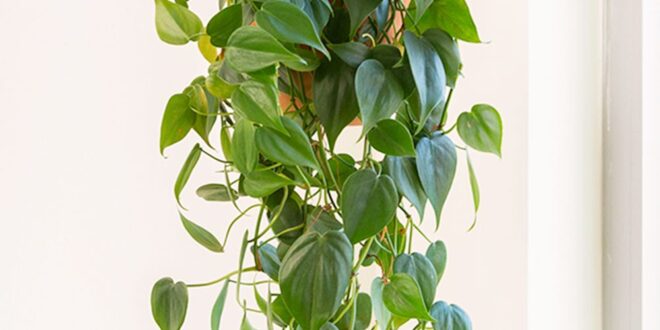Hanging plants are a fantastic way to bring a touch of nature into your home while adding a stylish and modern twist to your indoor decor. Whether you’re an experienced plant enthusiast or just starting your green journey, hanging plants offer a versatile and visually appealing option for any space. In this guide, we’ll explore the best types of hanging plants, provide essential care tips, and share creative ideas for showcasing them in your home.
Why Choose Hanging Plants?
1. Space-Saving Design
Hanging plants are perfect for those who want to enjoy greenery without taking up valuable floor space. They are ideal for small apartments, offices, or any room where floor space is limited.
2. Enhanced Aesthetics
Hanging plants add a unique visual element to your decor. They create a floating garden effect that can make your space feel more vibrant and alive. Their cascading foliage can soften harsh lines and add a touch of natural elegance to any room.
3. Improved Air Quality
Like all plants, hanging plants help purify the air by absorbing toxins and releasing oxygen. This can contribute to a healthier living environment and enhance overall well-being.
Best Types of Hanging Plants
1. Spider Plant (Chlorophytum comosum)
The Spider Plant is a favorite among indoor gardeners for its air-purifying qualities and easy care.
- Features: Long, arching leaves with small offshoots that resemble spiders.
- Care: Prefers indirect light and can tolerate occasional neglect.
2. Pothos (Epipremnum aureum)
Pothos is known for its attractive trailing vines and low-maintenance nature.
- Features: Heart-shaped leaves in various shades of green, gold, or variegated.
- Care: Thrives in a range of lighting conditions and requires minimal watering.
3. English Ivy (Hedera helix)
English Ivy adds a touch of classic charm with its elegant, trailing vines.
- Features: Small, lobed leaves that cascade gracefully.
- Care: Prefers cooler temperatures and indirect light.
4. String of Pearls (Senecio rowleyanus)
String of Pearls is a unique and eye-catching choice for hanging baskets.
- Features: Round, bead-like leaves that form a cascading effect.
- Care: Requires bright, indirect light and infrequent watering.
5. Boston Fern (Nephrolepis exaltata)
The Boston Fern is known for its lush, feathery fronds that add a touch of greenery to any space.
- Features: Dense, arching fronds that create a full, bushy appearance.
- Care: Prefers high humidity and indirect light.
How to Care for Hanging Plants
1. Light Requirements
Most hanging plants thrive in bright, indirect light. Avoid placing them in direct sunlight, which can scorch the leaves. For plants like Pothos, they can adapt to lower light conditions but will grow slower.
2. Watering
Watering needs vary depending on the plant. Generally, allow the top inch of soil to dry out before watering. Overwatering is a common mistake, so ensure your pots have good drainage.
3. Fertilizing
Feed your hanging plants with a balanced, water-soluble fertilizer during the growing season (spring and summer). Follow the recommended dosage to avoid over-fertilization.
4. Pruning
Regular pruning helps maintain the shape and health of your hanging plants. Remove any dead or yellowing leaves and trim back overly long vines to encourage new growth.
5. Pests and Diseases
Monitor your plants for common pests such as spider mites or aphids. Use insecticidal soap or neem oil if needed. Ensure good air circulation around your plants to prevent fungal diseases.
Creative Ways to Display Hanging Plants
1. Macrame Hangers
Macrame plant hangers add a bohemian touch to your decor. They come in various styles and can be hung from ceilings, hooks, or wall-mounted brackets.
2. Floating Shelves
Install floating shelves to create tiered displays for your hanging plants. This allows you to showcase multiple plants at different heights, adding visual interest.
3. Wall-mounted Planters
Wall-mounted planters are perfect for creating a vertical garden. They can hold a variety of hanging plants and make a stunning feature wall.
4. Hanging Baskets
Use decorative baskets or containers to house your hanging plants. Choose materials that complement your interior design, such as woven rattan or sleek metal.
Frequently Asked Questions (FAQs)
1. What are the best hanging plants for low light conditions?
Plants like Pothos and Spider Plant are great for low light conditions. They are adaptable and can thrive in indirect light.
2. How often should I water my hanging plants?
Watering frequency depends on the plant and environmental conditions. Generally, allow the top inch of soil to dry out before watering. Be cautious not to overwater.
3. Can I hang plants outside?
Yes, many hanging plants can be grown outdoors, especially in shaded or partially shaded areas. Ensure they are protected from extreme weather conditions.
4. How do I prevent pests on my hanging plants?
Regularly inspect your plants for pests and maintain good air circulation. Use insecticidal soap or neem oil to treat infestations as needed.
5. What type of fertilizer should I use for hanging plants?
Use a balanced, water-soluble fertilizer during the growing season. Follow the instructions on the packaging to avoid over-fertilization.
Read more Ximena Saenz: A Look into Her Journey and Achievements
Conclusion
Hanging plants offer a beautiful and practical way to enhance your indoor space. With their unique visual appeal and numerous benefits, they can transform any room into a vibrant, green oasis. By choosing the right plants and following proper care guidelines, you can enjoy the beauty of hanging plants and create a refreshing environment in your home.

